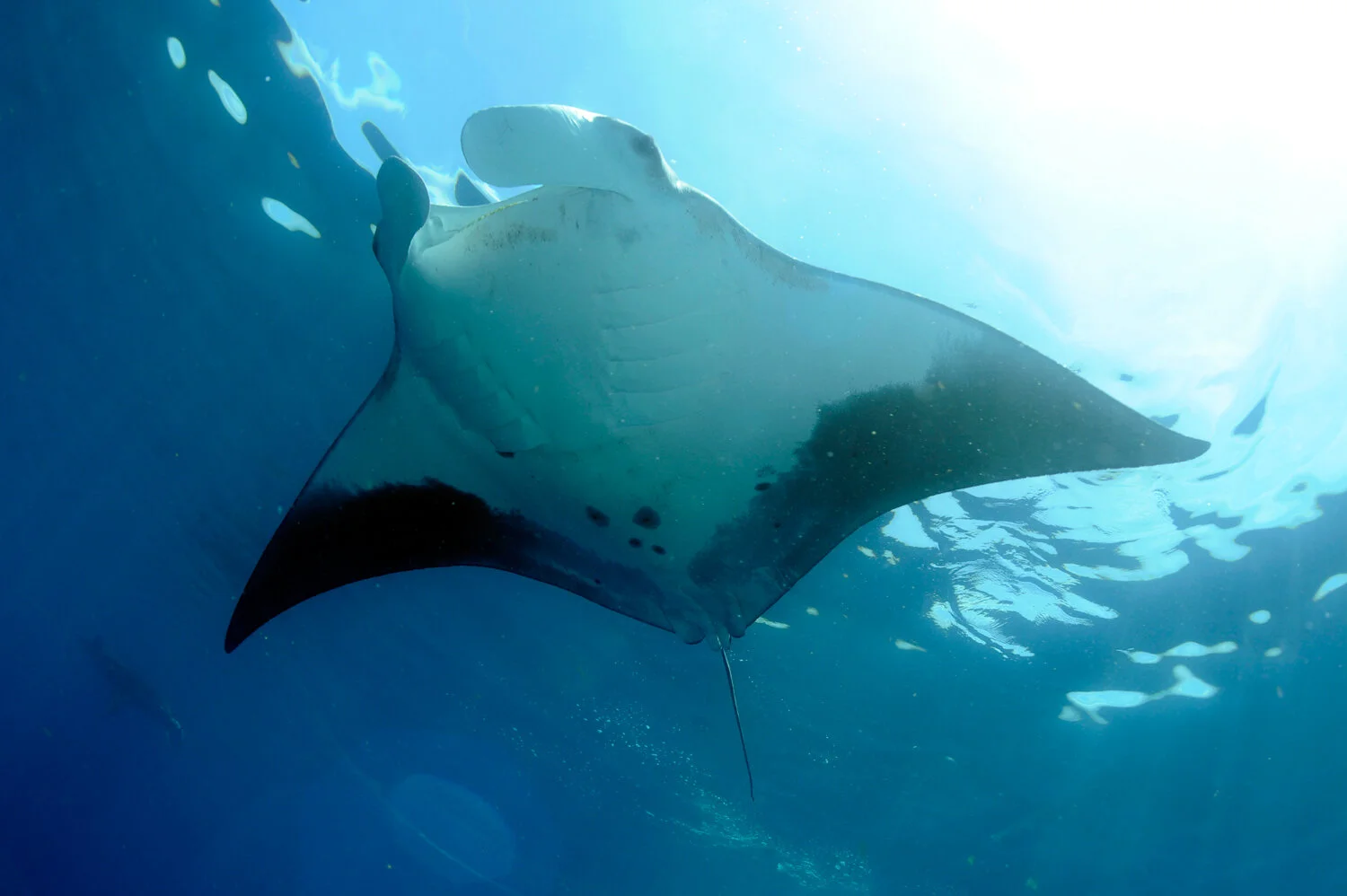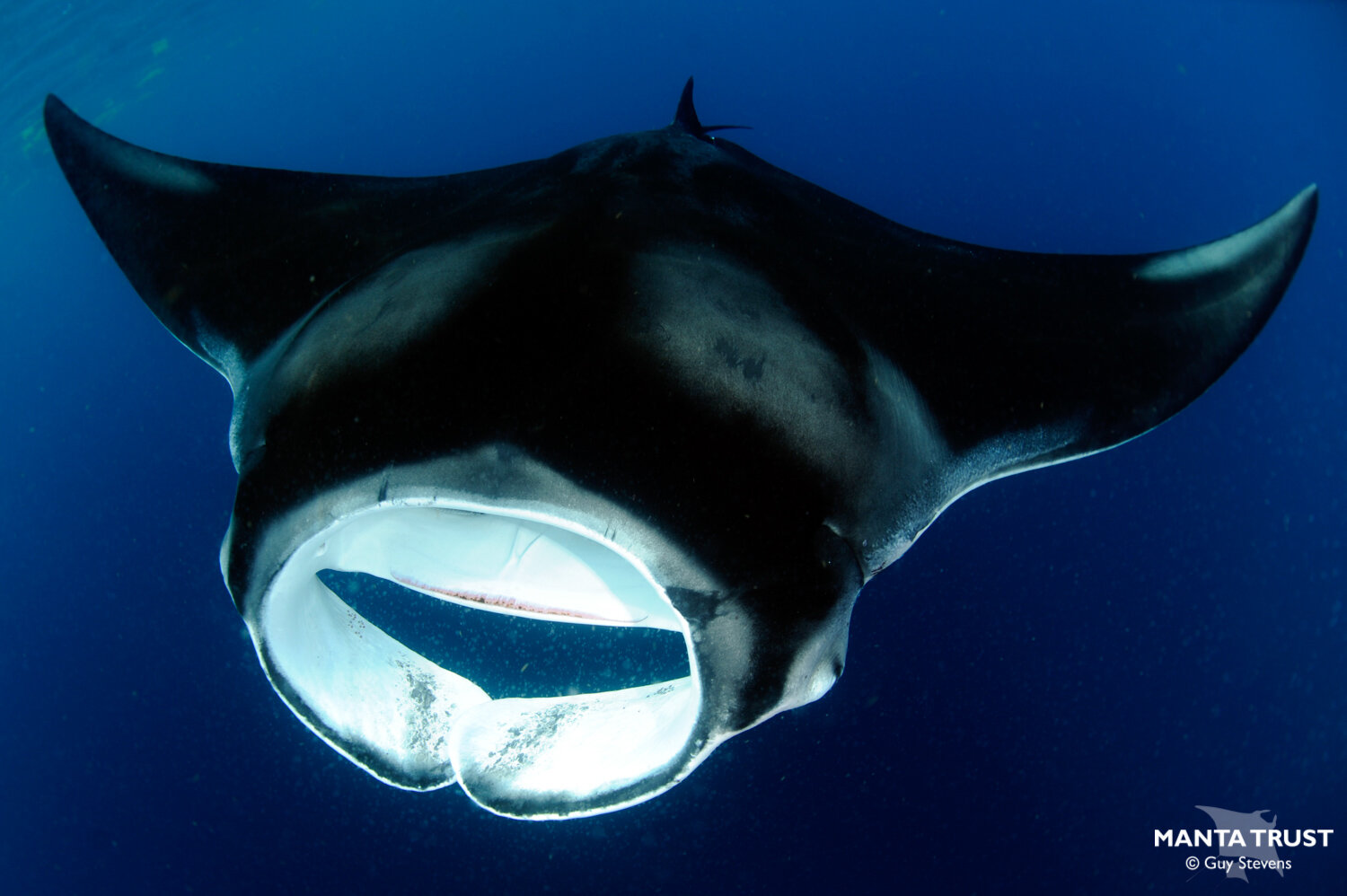
OVERVIEW
The Atlantic manta ray Mobula yarae has recently been described and accepted as a new species of manta ray, after 15 years of being considered a putative proposed species. Occurring throughout the Caribbean Islands and along the Atlantic coastline of the Americas, from Massachusetts in the US south to southern Brazil, it is sympatric to the oceanic manta ray in this region. The Atlantic manta ray appears to occupy a similar niche to the reef manta ray. It may well therefore be that some of the pioneering oceanic manta rays that crossed the open ocean to the Caribbean found plentiful sources of food along the inshore reefs and began to diverge into a new species - essentially, nature replicating the evolution of the reef manta ray again. Genetic analysis has supported the description of this new taxon, leading eventually to its formal recognition, based on an extensive study published in July 2025.
DISC WIDTH
Average: 300-400cm
Max: 481cm
WEIGHT
Max: ~1,077kg
LIFESPAN
Likely to be around 40 years
KEY FEATURES
Dorsal white shoulder markings form two mirror image right-angled triangles, creating a ‘T’ in black. Although ‘T’ shape tapers together towards the bottom where it joins the back.
If present, ventral spots clustered around lower abdominal region.
Often have large patches of round or oblong shaded areas on the belly below the gills.

GALLERY

LATEST RESEArCH
To see publications on manta and devil rays from the Manta Trust and our affiliate projects please click here:
WANT TO LEARN ABOUT OTHER MOBULID SPECIES?

















